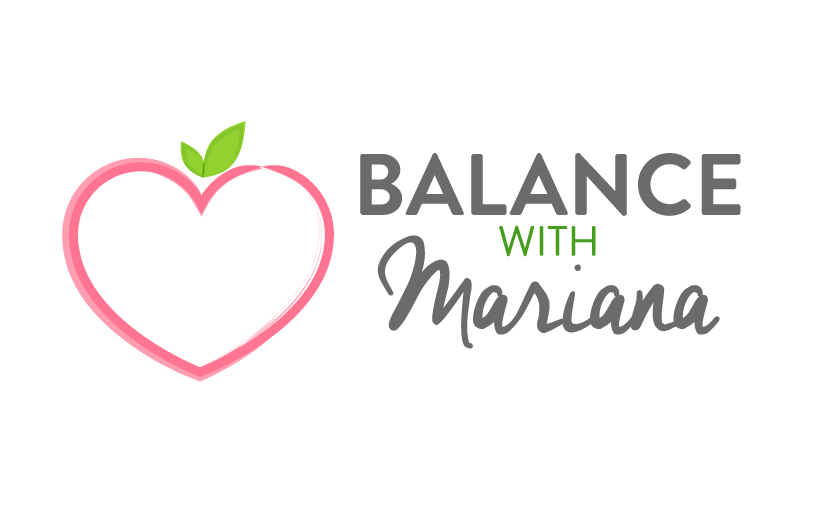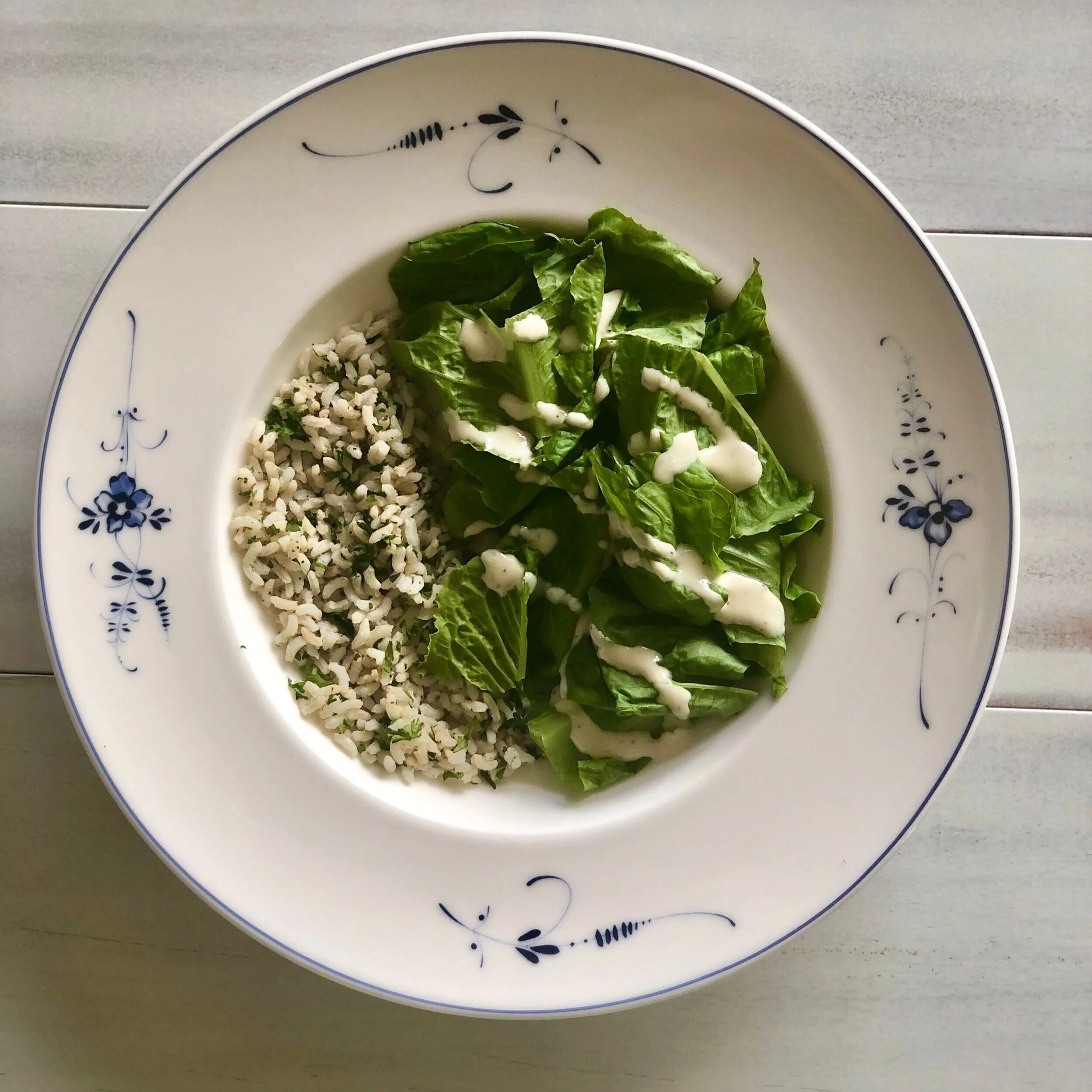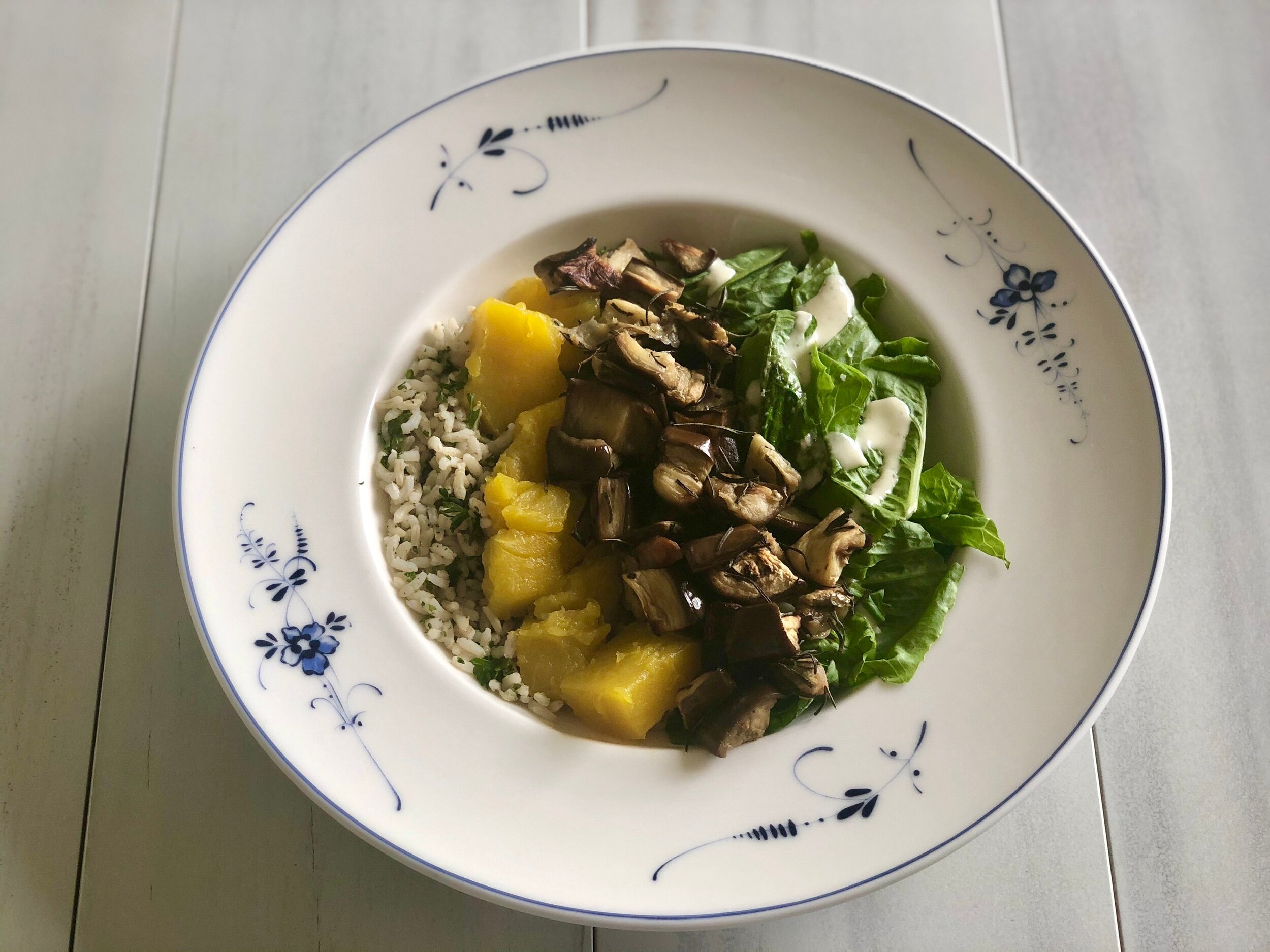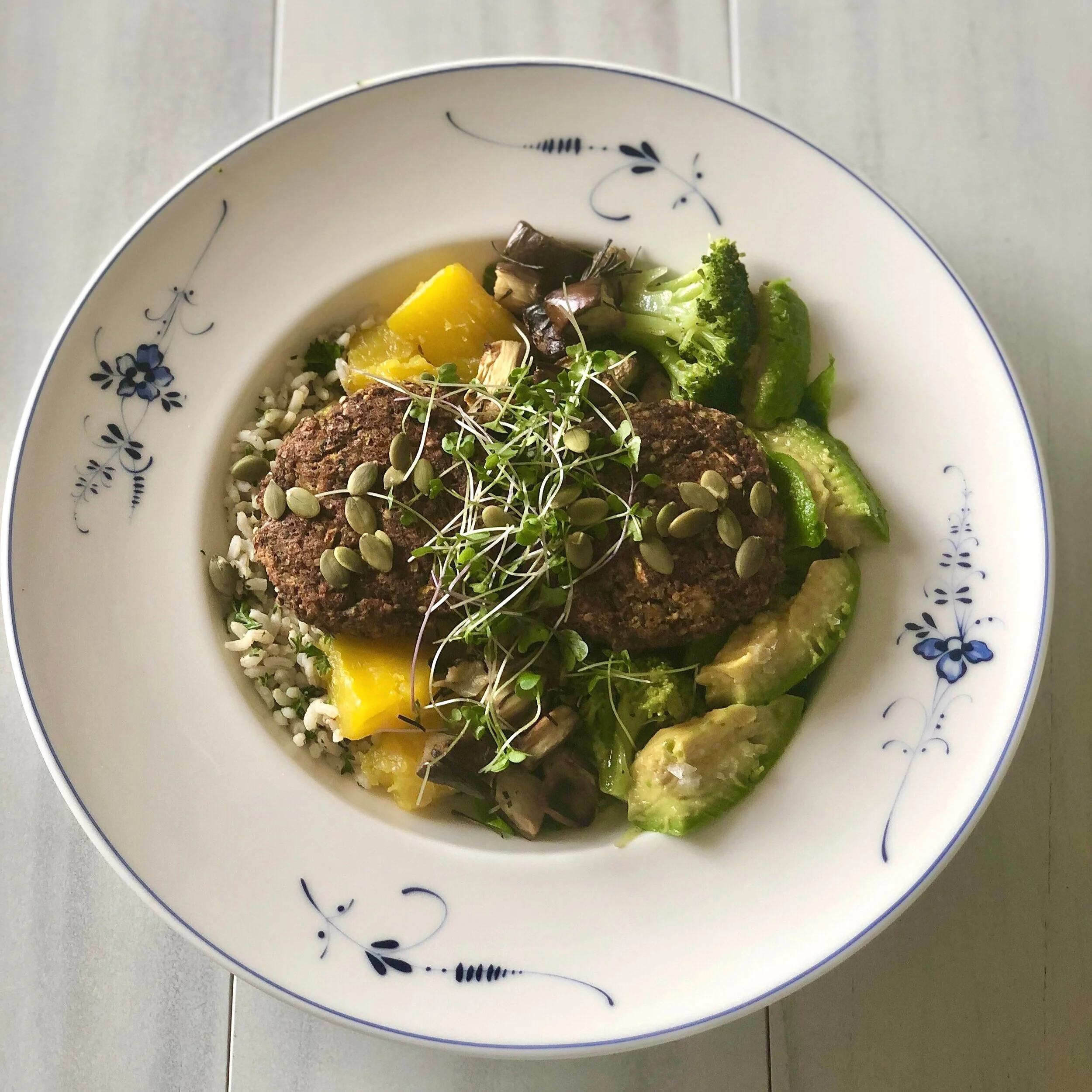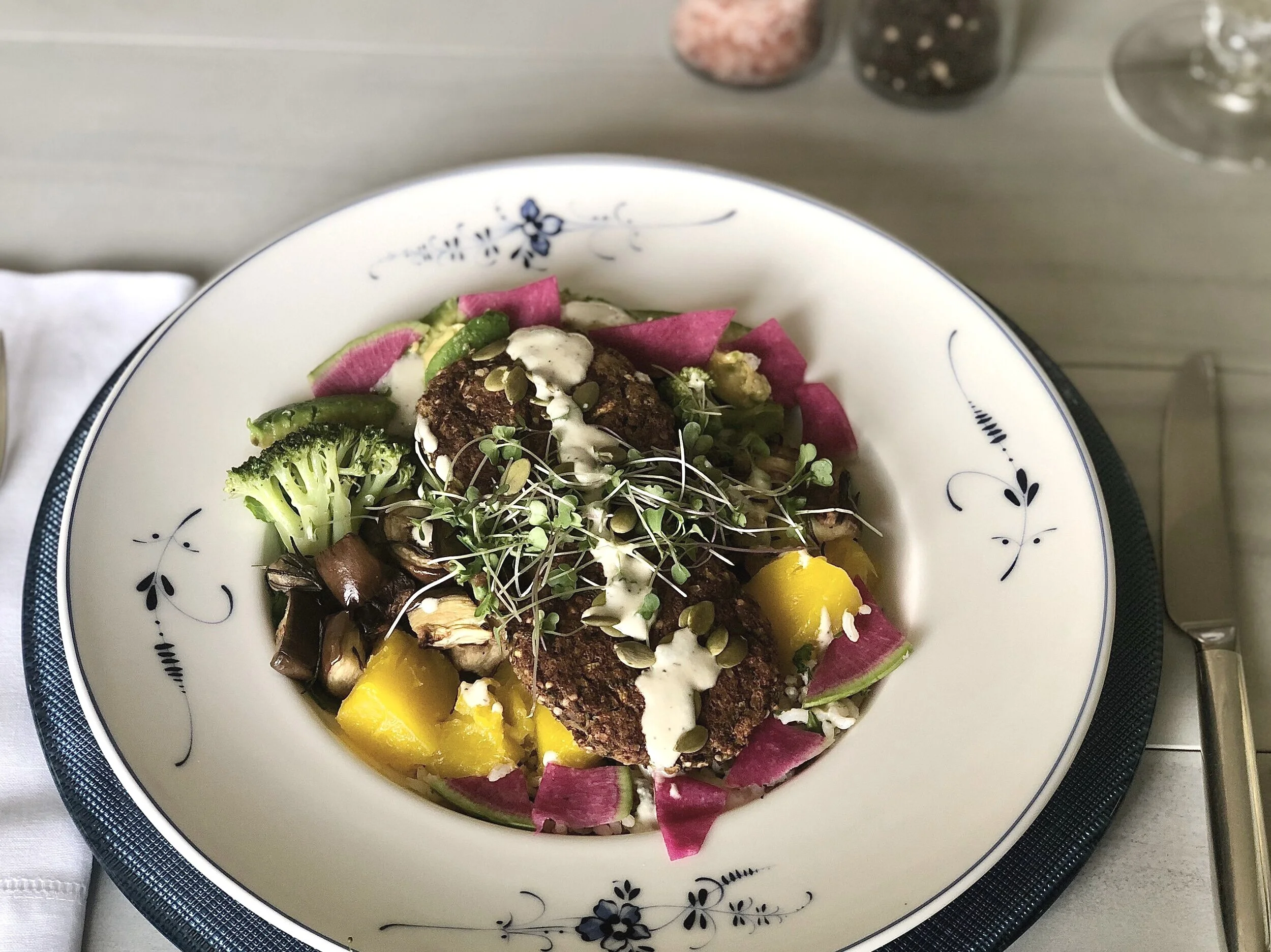Macro bowls a.k.a. Buddha Bowls are one of my favorite all-time meals. They are BALANCED, EASY TO MAKE, ADJUSTABLE/VARIABLE, FILLING and usually, totally Instagram worthy.
A macro bowl is my daily go-to dinner, which I make using leftovers (or things I “batch cooked” earlier including grains/beans/veggies), I toss some fresh greens, sprinkle some seeds and/or avocado, a healthy sauce, and I’m good to go.
Basically, it generally consists of only 5 minutes prep using whatever I have in the fridge.
While there are tons of variations, I wanted to offer an easy GUIDE to help you make your own macro bowl. Plus, I’ll share one of my favorite recipes below.
First I must explain briefly: Why is it called it macro bowl?
A macro bowl contains all the main macronutrient groups (which is what makes it balanced and filing). It always has protein (vegan or animal), healthy fats, healthy carbohydrates (I stick to healthy ones that don’t spike your blood sugar and are naturally gluten-free) and I make sure to pack it with fiber and greens.
Making a macro bowl (following my guide) is one of the best ways to make sure you’re getting a balanced meal with all of the nutrients you need to keep you healthy, to keep your blood sugar balanced and your body happy.
Since everyone has different metabolisms and body goals, there isn’t a set macronutrient ratio and portion sizing for these bowls, but I’m sharing below approximate amounts that I generally use, and I encourage you to listen to your body.
Best Macro Bowl Recipe 5-Step Guide:
1. GRAIN: I opt for a naturally gluten-free grain as it tends to be less inflammatory and easier on my gut than those with gluten. I usually stick to ½ cup cooked of 1 GF grain. Examples: quinoa, millet, buckwheat, brown rice or wild rice. These fiber-rich grains (in moderate amounts) can help control blood sugar and lose unwanted weight (if they sit well with your gut). NOTE: if you want to make it grain free, use “riced” cauliflower or broccoli, but get some healthy carbs from your veggies (ex. adding butternut squash or sweet potato)
2. LEAFY GREENS. Go crazy on the greens. I suggest making at least ¼ of your entire bowl be green. I love to include fresh, raw leafy greens (ex. lettuce of any/all variety, baby arugula, baby spinach, watercress) but I will often also include cooked greens, like sautéed spinach, collard greens, bok choy or baked kale chips.
3. OTHER VEGGIES: I suggest adding at least 2 additional veggies on top of your leafy greens. These can be raw or cooked.
For RAW, my favorites are: 1) microgreens / sprouts (which are so nutrient-dense and contain up to 100 times more digestive enzymes than other raw veggies!), and 2) fermented veggies like sauerkraut which provide gut-healthy probiotics that help you digest and better assimilate nutrients in your bowl. Other raw veggies include: thinly sliced radishes, shredded purple cabbage, “zoodled” root veggies, thinly sliced cucumber or halved organic cherry tomatoes.
For COOKED, I include any and all veggies. Sautéed or roasted are my favorite cooking methods, always with a high-quality oil (for high temperature cooking I use organic avocado oil, coconut oil or ghee). Examples include: sautéed garlicky mushrooms, roasted zucchini and eggplant, crispy roasted broccoli, curried cauliflower, baked/roasted sweet potato, grilled asparagus, beet and carrot “chips”, sautéed cubed squash, sautéed green beans with sesame oil).
NOTE: I like to mix different colors of veggies in order to include a wider variety of nutrients and flavors (and because it looks beautiful). And I usually aim to include at least one cruciferous veggie, for their amazing detoxifying properties (ex. broccoli, cauliflower, brussels sprouts, arugula, cabbage, etc.)
4. HEALTHY FATS: Choose 1 to 3 healthy fats. Examples: homemade dressing or sauce like vegan pesto or vegan cheese, sprinkle of seeds (i love sunflower and pumpkin seeds), avocado slices and/or olives. I like to include 2 sources of healthy fats as it makes it extra yummy and satisfying – and these omega-3 rich fatty acids are great for your hair/skin/nails/hormones/brain health. Note: your healthy fat can double as your protein (ex. vegan cashew cheese + seeds).
5. PROTEIN: I usually opt for a vegan source of protein (mostly legumes/pulses) and stick to ½ cup cooked. Examples: beans (I love black beans or white beans), lentils, chickpeas, organic edamame, tempeh, or something made from these pulses (“batch-cooked” in advanced) such as lentil burgers, black bean burgers, falafel or hummus. If you prefer to avoid legumes/pulses and use animal protein, you can opt for some grilled chicken, salmon or leftover protein of your preference.
NOTE:: In the US you can also buy healthy premade veggie burgers (i look for soy-free, dairy-free and gluten-free with no preservatives); In nicaragua where they’re not available, I make my own vegan burgers in large batches and freeze them!
Here is an easy, delicious recipe to get you started (which you can modify using what you have).
Balance with Mariana’s Colorful Vegan Macro Bowl
Ingredients (serves 1):
- ½ cup cooked brown rice (or buckwheat or quinoa)
- ½ cup roasted eggplant (or red cabbage or beets)
- ½ cup roasted squash (any squash in season; can be butternut, acorn, spaghetti, yellow/summer)
- ¾ cup roasted broccoli (or cauliflower, or brussels sprouts)
- 1 ½ cups leafy lettuce greens mixed (mixed varieties) cut into thin strips
- Few slices of avocado (about ½ of a Hass avocado)
- 2 small cooked lentil burgers (or approx. 3 falafel or 1 large black bean burger) – made ahead of time
- Handful of microgreens
- 1 tablespoon pumpkin seeds
- Anti-Inflammatory Tahini dressing (use about 2 tablespoons and save leftovers):
2 tablespoons Tahini
1 tablespoon raw apple cider vinegar
1 ½ tablespoons freshly squeezed lemon (and more to taste)
1 teaspoon organic Dijon mustard
3 tablespoons extra-virgin olive oil
¼ teaspoon ground turmeric + ¼ teaspoon black pepper
Pink Himalayan salt to taste
Water to thin as needed
Instructions:
1. Mix together dressing ingredients (I usually duplicate recipe and blend, then store in a small jar for dressings). Taste and adjust to your liking (possible more lemon or olive oil).
2. In a small non-stick pan or toaster oven, heat the lentil burgers (or veggie patties of choice) until just warm. Option to also warm your grains and your roasted veggies if they were refrigerated.
3. Slice salad greens and avocado.
4. Create your bowl. I like to create a base of greens + grains, roughly ¾ salad greens + ¼ brown rice. Then add the roasted veggies, lentil burgers (or veggie patties or choice) and sliced avocado - side by side. Top off with the microgreens and the pumpkin seeds. Lastly, drizzle the Tahini dressing over the bowl.
NOTE: There are many healthy restaurants that provide similar bowls, and I suggest you check them out for your next healthy (and inexpensive) meal out (or to order in). In Nicaragua, I love Nuve’s bowls.
If you enjoyed this Macro Bowl guide and recipe, please LIKE, SHARE and/or COMMENT below.
Let me know what variation you make/enjoy, and tag me on Instagram when you post your gorgeous macro bowl!
